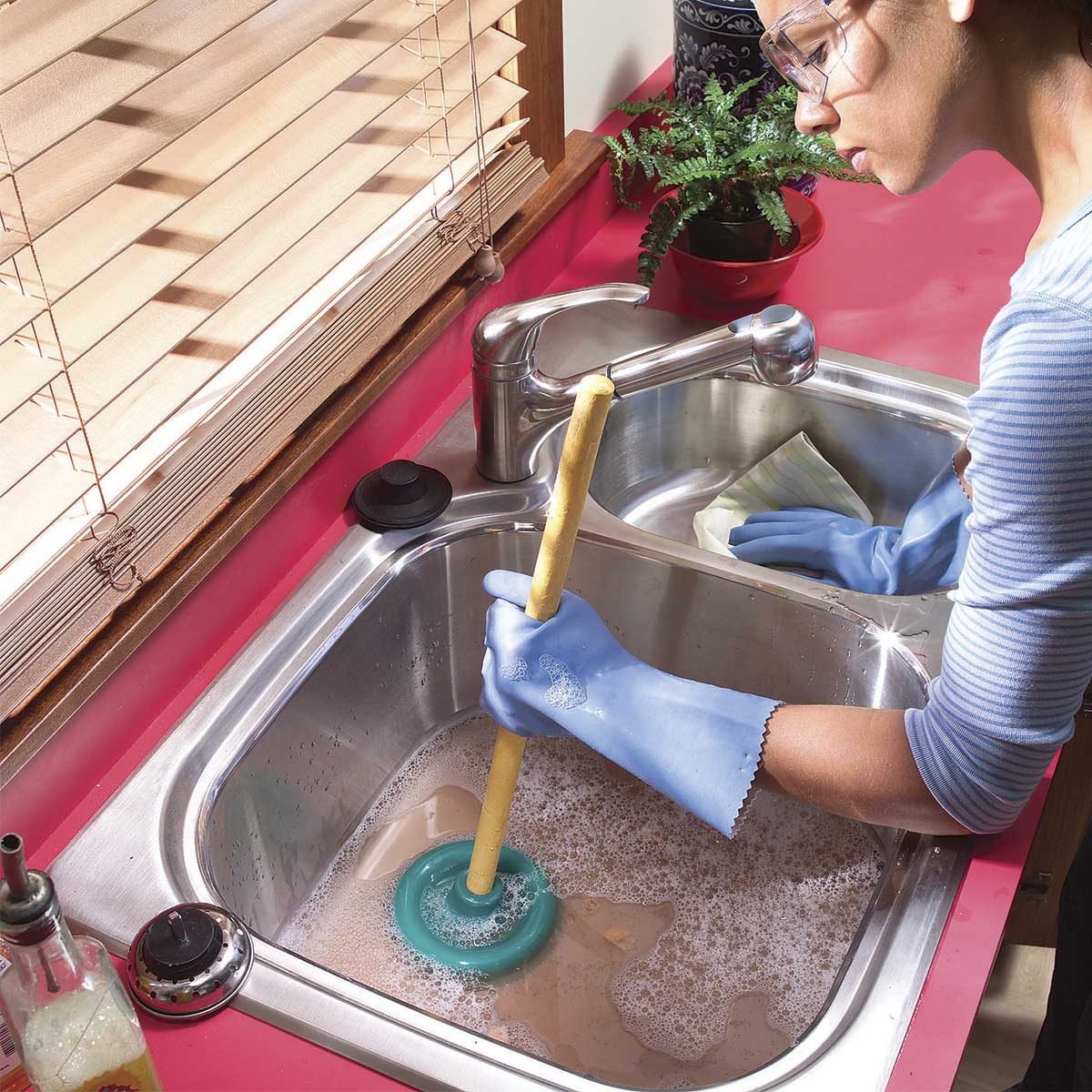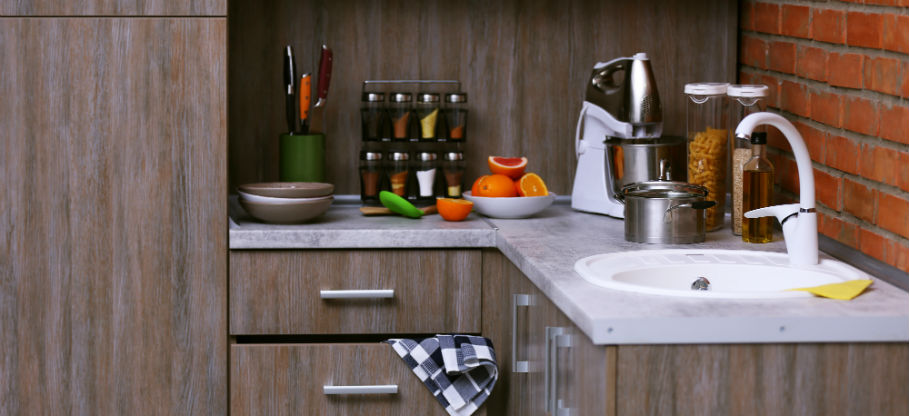Every person maintains their own way of thinking in relation to DIY Plumbing Fixes.

In this post, we will certainly be considering five simple steps you might require to release your cooking area sink from obstructions and save you from the discomfort and also embarrassment of taking care of a clogged kitchen sink.
Blocked kitchen area sinks are one of the most common drain problems property owners deal with. As well as what's even more, it's a unpleasant and very uncomfortable view. Imagine mosting likely to the sink to do your meals and finding out that the drainpipe is obstructed as well as water can not flow down conveniently.
A lot of blocked water drainages are triggered by food particles, oil, fat, and soap fragments. They block the sink and make it hard for water to drop the drain quickly. While it is appealing to put a call through to the plumbers, there are a couple of DIY hacks you can attempt first before making that telephone call.
1. Baking Soda and also Vinegar
As opposed to making use of any kind of kind of chemicals or bleach, this method is much safer and also not dangerous to you or your sink. Sodium bicarbonate as well as vinegar are daily residence products utilized for numerous other things, and they can do the trick to your cooking area sink.
Firstly, get rid of any kind of water that is left in the sink with a cup.
Then pour an excellent quantity of baking soda down the drain.
Pour in one mug of vinegar.
Seal the water drainage opening as well as enable it to settle for some mins.
Pour warm water down the tubes to melt away various other stubborn residue as well as bits.
Following this simple approach could suffice, as well as you can have your kitchen sink back. Repeat the procedure as much as you consider needed to clear the sink of this debris entirely.
2. Try a Plunger
If the issue is not from the waste disposal unit, you can attempt utilizing a plunger. Bettors are conventional residence tools for this event, and also they can can be found in handy if you utilize them correctly. A flat-bottomed bettor is most suitable for this, however you can make do with what you have is a commode bettor.
Adhere to the following basic actions to use the plunger successfully:
Secure the drainpipe with a dustcloth and fill the sink with some hot water
Place the plunger ready over the drain and start diving
Check to see if the water runs openly after a couple of dives
Repeat the process until the drainage is free
3. Possibly it's the Garbage Disposal
In lots of instances, the blockage may be due to a blockage in the disposal. Use pliers instead.
You can check out the following option to unblock your cooking area sink if this does not function.
4. Use a Hanger
This technique is effective and inventive, particularly if you know and also perhaps see what's causing the obstruction. Sometimes, the obstruction could be caused by hair, precious jewelry, or significant chunks of food bits. Making use of a wire cloth wall mount or a plumber's serpent if you have one can do the method. All you require do is straighten out the hanger to drop the drain while you carefully pick the particles creating the obstruction.
Run warm water down the drain after this to see exactly how effective you were.
5. Usage Boiling Water
When confronted with a blocked sink, the first thing you must attempt is to put boiling thin down the drain. That is about the most simple treatment to blocked sinks and drainages. Boiling water helps neutralize the fragments as well as debris triggering the blockage, specifically if it's grease, oil, or soap bits, and in many cases, it can flush it all down, and also your sink will be back to normal.
Do not attempt this method if you have plastic pipelines (PVC) because warm water could thaw the lines and trigger even more damage. You may want to stick to using a plunger to get debris out if you use plastic pipelines.
Using this technique, activate the tap to see how water flows after pouring hot water down the tubes. If the obstruction continues, attempt the process once again. However, the clog could be extra relentless sometimes as well as require greater than simply boiling water.
Final Words
Attempting these few methods might conserve you the costs of having a plumber check it. In numerous instances, a plumber is what we need. In cases where you locate it difficult to unblock the sink even after attempting all these techniques, it might be time to leave it to the experts.
Call specialist plumbing firms to repair your drain issues and also other different home plumbing requirements.
Clogged kitchen sinks are one of the most common drainage problems home owners face. Imagine going to the sink to do your recipes and finding out that the drain is clogged and water can not flow down easily.
They clog the sink and make it hard for water to go down the drainpipe promptly. When encountered with a stopped up sink, the very first thing you should attempt is to put boiling water down the drain. Boiling water helps counteract the bits as well as particles creating the obstruction, especially if it's grease, soap, or oil particles, as well as in many instances, it can flush it all down, and also your sink will be back to regular.
How to Unclog a Kitchen Sink
Take the Plunge
Start your efforts by plunging. Use a plunger with a large rubber bell and a sturdy handle. Before getting to work on the drain, clamp the drain line to the dishwasher. If you don t close the line, plunging could force dirty water into the dishwasher.
Fill the sink with several inches of water. This ensures a good seal over the drain.
If you have a double sink, plug the other drain with a wet rag or strainer.
Insert the plunger at an angle, making sure water, not air, fills the bell.
Plunge forcefully several times. Pop off the plunger.
Repeat plunging and popping several times until the water drains.Clean the Trap
The P-trap is the curved pipe under the sink. The trap arm is the straight pipe that attaches to the P-trap and runs to the drain stub-out on the wall. Grease and debris can block this section of pipe. Here s how to unclog a kitchen sink by cleaning out the trap:
Remove as much standing water from the sink as possible.
Place a bucket under the pipe to catch the water as it drains.
Unscrew the slip nuts at both ends of the P-trap. Use slip-joint pliers and work carefully to avoid damaging the pipes or fasteners.
If you find a clog, remove it. Reassemble the trap.
If the P-trap isn t clogged, remove the trap arm and look for clogs there. Run the tip of a screwdriver into the drain stub-out to fetch nearby gunk.Spin the Auger
With the trap disassembled, you re ready to crank the auger down the drain line.
Pull a 12-inch length of cable from the auger and tighten the setscrew.
Insert the auger into the drain line, easing it into the pipe.
Feed the cable into the line until you feel an obstruction. Pull out more cable if you need to.
If you come to a clog, crank and push the cable until you feel it break through. The cable will lose tension when this happens.
Crank counterclockwise to pull out the cable, catching the grime and debris with a rag as the cable retracts.

As an avid reader about Repairing Common Household Plumbing Issues, I thought sharing that piece of content was beneficial. Do you know someone else who is involved in the niche? Please feel free to share it. I treasure reading our article about Common Household Plumbing Issues.
Visit Url